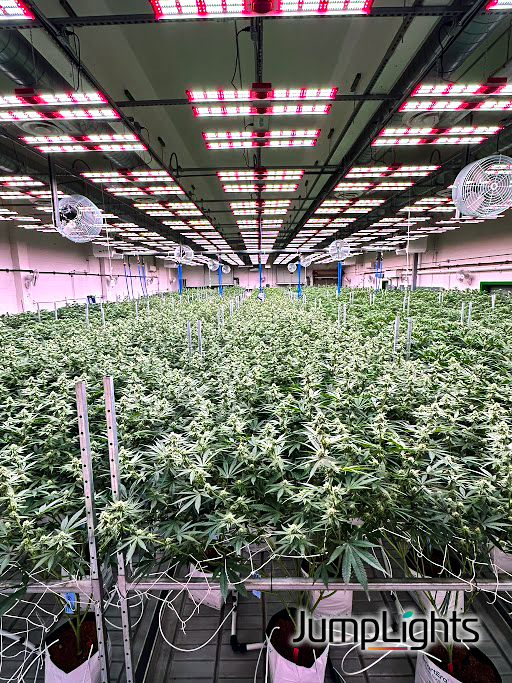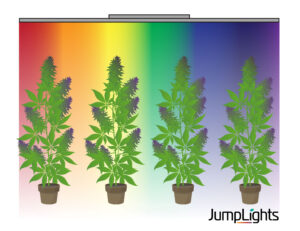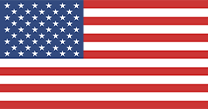
December 12, 2024
When I started working at JumpLights, I needed to learn basic lighting terminology that people in our industry use to talk about the power and efficiency of LED lighting solutions. In this article, I will give a quick overview of what I learned about the key metrics to consider when evaluating lights: PPF, PPE, and PPFD.
Before getting into those metrics, though, I’d like to first talk about PAR, or photosynthetically active radiation. PAR refers to the light spectrum – 400 to 700 nanometers – that plants can efficiently use for photosynthesis. Light toward either end of the nanometer spectrum (blue and red) is generally better at encouraging photosynthesis, but you also need the middle part of the spectrum for human visibility and having a balanced spectrum for multiple plant types. LED lighting solutions use carefully chosen diodes to emit PAR light more efficiently than other forms of lighting. That’s why JumpLights’ lights are so efficient.
 It’s important to note that plants also use red light between the 700–800 nanometer range for photosynthesis. This is called far red light.
It’s important to note that plants also use red light between the 700–800 nanometer range for photosynthesis. This is called far red light.
Now, on to defining PPF, PPE, and PPFD, which are essential factors in LED lighting solutions.
What is PPF?
Photosynthetic Photon Flux (PPF) is the total amount of light per second (defined as light in the PAR zone) that is produced from a given source of light. It’s the number of photosynthetically active photons that are emitted every second. The measurement is given in μmol/s, or micro mols per second. It doesn’t tell you anything about the direction of the light or the efficiency with which it is being delivered, but it does tell you how much light there is.
JumpLights Catalyst under canopy light 340 models have a PPF of 835 μmol/s – that’s the highest we’ve seen for an under canopy light. This tells you that there are a lot of photons available to reach plants, which is generally a good thing for cannabis. It doesn’t tell you how efficiently those photons are delivered, which brings us to PPE.
What is PPE?
Photosynthetic Photon Efficiency (PPE) measures how efficiently a light converts electrical energy into photons of light. You get PPE by dividing PPF by wattage (W), so PPF/W = PPE and you express the result in micromoles per Joule (µmol/J). If a light has high PPE, it means the light efficiently converts the power you are paying for into light that can grow your plants. In general, it’s good to have a high PPE, but there are some choices lighting companies can make – like adding a lot of red light that can bleach plants – that can help increase PPE, but be bad for plants. Overall, LED lighting solutions have higher PPE than HPS or HID lights because they deliver more PPF, for a given amount of power, making them a more efficient choice for your grow.
As an example, JumpLights Catalyst models have a PPE of up to 2.77, making them efficient for a broad-spectrum under canopy light.
What is PPFD?
Photosynthetic Photon Flux Density (PPFD) measures the amount of light (photons of light) that get to a particular area each second. It’s not just how much light is put out; I like to think of it as how much light is getting to a particular area. It is given in μmol/m^2/s, or μmol per meter squared per second. These metrics are location-specific, so they have to be done with your space in mind, taking into account vertical height and looking into how much light reaches each part of the overall canopy. JumpLights will give you PPFD measurements as part of our free light planning process; if you would like to get a free light plan, fill out the form to get started.
While all of these metrics are useful in evaluating LED lighting solutions, PPFD is the most specific metric and likely the most valuable of the three. Once you have these metrics in hand, you’ll be able to make a good decision about which lights to choose.




